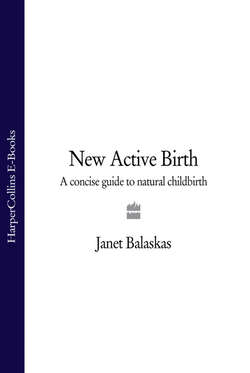Читать книгу New Active Birth: A Concise Guide to Natural Childbirth - Janet Balaskas - Страница 30
A WORD OF WARNING:
ОглавлениеAnyone can benefit from yoga, whether you have exercised before or not. However, if you have a chronic back problem or any complications in your pregnancy, such as a history of miscarriage or cervical stitch, then do check with your doctor first and follow the cautionary notes carefully.
Osteopathy is an ideal compliment to this sort of exercise and it is advisable to consult an osteopath who specialises in pregnancy if you have a back problem, pain in the sacro-illiac joints, tension headaches, sinusitis or any joint pain (see Useful Addresses).
Practising these exercises will help to relieve cramps in the calves, backache, varicose veins, haemorrhoids, high blood pressure, sleeplessness, tiredness, nausea and other common complaints of pregnancy, but do read the instructions carefully before you start each exercise.
Some women find that they are uncomfortable lying on their backs during pregnancy, particularly in the last month. This is because the weight of the heavy uterus presses on the large blood vessels in your abdomen which slows down your circulation and can cause dizziness. If this happens to you at any stage, then roll over onto your side, come up onto your hands and knees (all fours) and, in future, leave out any exercise which involves lying on your back. However, for most of us this is no problem and lying on the back for short periods, provided the knees are bent or the legs up, is very relaxing.
Similarly, some women find that the standing positions or forward bends should not be held for too long, while others enjoy holding them for a few minutes. At all times, let your body be your guide and stop to rest when you have had enough.
